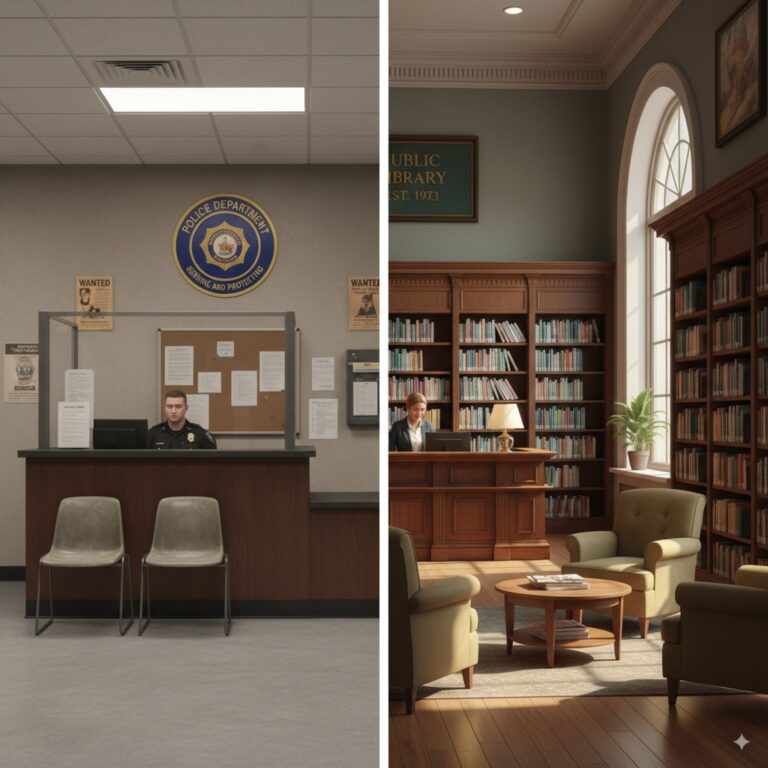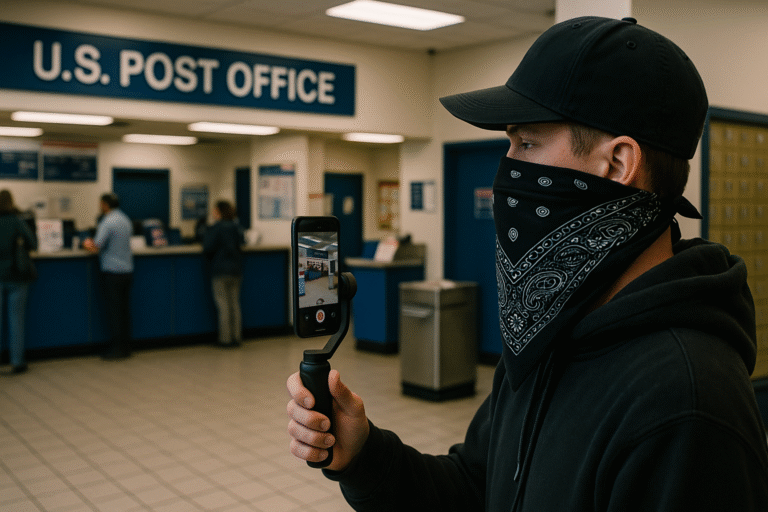When Cameras Are Banned Anyway: Courtrooms & Supreme Court
Cameras are Forbidden in Courts

The U.S. Supreme Court famously forbids any TV cameras or photography in oral argument, even though its hearings are technically “open” to the public. In practice, only a few lucky people get seats in the courtroom, and the rest of us must wait days (or longer) for transcripts or audio. That secrecy stands in stark contrast to most other courts. Indeed, “every state supreme court allows cameras, and so do the highest courts in Canada, the UK and Australia.” Why does the Supreme Court cling to such a rigid ban, and are the usual excuses valid? Below we trace the history and rules behind the ban, compare other court policies, and examine the constitutional and practical arguments.
History of the Camera Ban
Courtroom cameras were first widely banned in response to media excess. The 1935 Lindbergh trial of Bruno Hauptmann drew hundreds of reporters and dozens of cameramen, producing a “media circus” in the courtroom[1]. Photographers crowded the bench, blinding witnesses with flashes and chasing jurors down courthouse halls. In the wake of that chaos, the American Bar Association in 1937 formally adopted a Canon forbidding any broadcast or photography in judicial proceedings. This “no cameras” attitude was soon codified into federal practice: Rule 53 of the Federal Rules of Criminal Procedure (1946) still states that a court “must not permit the taking of photographs…or the broadcasting of judicial proceedings”[2].
The Supreme Court itself reversed a conviction in Estes v. Texas (1965) after finding that TV coverage had so distracted participants that the trial was unfair[3]. On that basis, early courts treated cameras as presumptively perilous. But over time the law evolved. In Chandler v. Florida (1981), the Supreme Court declined to impose a constitutional ban, holding instead that states may experiment with cameras so long as a defendant can show actual prejudice[4]. Chandler noted that technology had changed since Estes and that there was no evidence “empirical data” demonstrating an inherent harm from cameras[4]. In short, no one has to prove that cameras are always harmless, but states may safely let the press broadcast if proper safeguards exist.
Thus, by the 1980s the legal backdrop was: federal courtrooms (especially criminal trials) generally forbade cameras by rule, but many state courts began to permit them under controlled conditions[5][2]. Over the past few decades various courts and judicial conferences experimented with limited broadcasts, especially in civil cases[6], but the basic tradition of “no cameras” remained intact in federal trials. The Supreme Court itself has never tinkered with this rule – it still forbids live video or photos outright, claiming it must “preserve its tradition”[7].
The Supreme Court’s Closed-Camera Policy
From its earliest days, the Supreme Court has refused any TV coverage. There is no formal rule actually on the books of “no cameras,” but in practice Chief Justice Marshall famously turned down requests for photography in the 19th century, and by the early 20th century officials simply barred media cameras. Today, the Court issues no live video; it only releases the audio of arguments (and later opinions) after significant delay. In fact, the Court’s own Press Office flatly says “there are no plans to change the Court’s current practices”[8].
Why? The justices routinely offer the usual reasons: cameras would break tradition, turn solemn proceedings into a “theater,” and allow the media to grab “embarrassing sound bites” or encourage lawyers and even justices to grandstand[7]. They also say that the public won’t really understand the technical arguments if just seen on TV. Critics – including veteran Court reporters – call these excuses “flimsy”[7]. As one commentator notes, the Court is “uncomfortable with change,” clinging to antiquated symbols like quill pens and elevator operators rather than modern media[9][10].
In the absence of cameras, the Court has in recent years grudgingly allowed same-day audio recordings of arguments. But even that is a half-step. Transcripts are available the day of argument, yet recordings only go live on Friday or later[11]. Opinion announcements (the “mulligan” day) often arrive only weeks or months after they happen, which famously led to news outlets initially botching the reporting of the 2012 healthcare rulings[12]. Altogether, the Supreme Court is perhaps best described as “doing its public work in the darkness of a…television and internet blackout”[13].
Other Courts: Much Wider Access
The U.S. Supreme Court is an outlier. Across the country, cameras in courtrooms have become common. In virtually every state high court, proceedings are routinely televised or live-streamed. As the Reporters Committee notes, “every state supreme court allows cameras”[9]. Indeed, more than 35 state courts of last resort now broadcast their oral arguments live[13]. Some states (like Florida, Texas, and California) have had this for decades. In Florida, a famous 1975 petition led to an experiment: by 1979 the Florida Supreme Court “opened the doors of all Florida’s courts to the electronic media without any requirement for consent”[14]. That one-year pilot went “without any major incident”[15] and was deemed a success. Surveys found mostly positive reactions from judges, lawyers and jurors[16], and Florida permanently enshrined media access for all proceedings[14].
Even at the federal level, some appellate courts have embraced cameras. The Judicial Conference authorized each Court of Appeals to decide its policy, and several circuits adopted open rules. For example, by the 1990s the Second and Ninth Circuits explicitly allowed TV coverage of oral arguments (with guidelines)[17]. Today, those courts (and several others) routinely live-stream or archive their argument sessions to the public. Notably, all U.S. courts of appeals now at least provide live audio feeds and recordings of arguments[17].
By contrast, federal trial courts remain largely closed. Except for ceremonial events (new judges or naturalizations), live cameras in U.S. District Court are forbidden. The one exception was a recent pilot (2011–2015) in a few districts that allowed televised civil cases with judges’ approval[6]. But after the pilot the Judicial Conference declined to expand or make permanent any exception[18]. To this day, Federal Rule of Criminal Procedure 53 still says a judge “must not permit” photography or broadcasting in any criminal courtroom[2] (and customarily federal trials follow the same rule).
In short, nearly every courtroom in the country – except the U.S. Supreme Court – has found ways to open its doors to cameras. Whether by state constitutional right or local rule, the general trend is toward more visibility[19][9]. According to a media guide, “nearly every state in the union has provisions to allow the media to use video cameras…in courtrooms in some circumstances”[19]. Many states impose strict rules (number of cameras, sound limits, no flash, etc.), but they permit coverage especially in high-profile cases. The result is that citizens in other jurisdictions can watch judges at work or review arguments on the Internet – a contrast sharpened by the Supreme Court’s steadfast prohibition.
The First Amendment Angle
What about the First Amendment? Attorneys and auditors sometimes point out that open courts are a bedrock principle in our system. Indeed, the Supreme Court has recognized that the public and press have a qualified First Amendment right to attend criminal trials (Richmond Newspapers, Press-Enterprise I & II). Those cases establish that criminal proceedings should be public by default and can be closed only for compelling reasons. But crucially, none of them establish a right to broadcast or film. Lower federal courts have consistently held that the First Amendment’s access right means a public can be present in the courtroom, not that it can have cameras and video feeds[20]. As one analysis puts it bluntly, “although the public has a right to attend trials, it does not have a right to watch them on television”[21].
In practice, this means the Constitution itself does not oblige the Supreme Court (or any federal judge) to allow cameras. Absent a constitutional mandate, only the Justices or Congress can authorize TV cameras in SCOTUS. (Efforts have been made in Congress: for years Reps. Connolly, Durbin, Grassley, and others have introduced a “Cameras in the Courtroom” Act to force the Supreme Court to televise arguments, but so far no vote has been held[22].) Critics argue that a truly open society should interpret “open court” to include modern media, and that judges should err on the side of publicity. Supporters of cameras note that allowing broadcasts would enhance public understanding of the judicial process. The American Bar Association even warned that “by hiding from cameras, the Court misses the opportunity to build trust and confidence in the judiciary”[23].
Weighing Practical Concerns
Opponents of cameras cite several practical worries. They worry witnesses or jurors might feel intimidated by lights and lenses, or that everyone (lawyers and justices alike) will play to the camera and change their behavior. In criminal trials, heightened media presence could risk a fair trial or reveal protected identities. The Supreme Court has also claimed that TV would distort the tone of arguments, as ordinary viewers might misinterpret a fierce lawyerly clash if not grounded in legal context. Finally, there are security and privacy concerns (e.g. cameras might capture jurors or allow endless replays of litigants).
But experience elsewhere suggests many of these fears can be managed or may be overstated. Modern equipment is far less obtrusive than mid-20th-century TV gear. For example, Florida’s rules allow one remote camera (with a single operator) and one still photographer at any proceeding[24], and require all equipment to be silent and unobtrusive. Judges in those states routinely set conditions (prohibit flash, fix the camera in one corner, pool cameras, etc.) to avoid any distraction. In Florida’s one-year open-camera experiment of 1979, observers reported that the trial “progressed without any major incident”[15]. In fact, a survey after that pilot found feedback was “predominantly positive,” leading the court to adopt permanent coverage[14].
On media-manipulation concerns, even camera skeptics admit that sound or editing can mislead no matter what technology is used. Segall and Chemerinsky point out that transcripts and audio become public very quickly today, and C-SPAN often adds still photos to live audio as a substitute for video. If radio feed is broadcast to millions minutes after the argument, they ask, “it is impossible to see the harm in allowing [viewers] to see the proceedings live just an hour earlier.”[25]. Indeed, people who have watched state Supreme Courts or the Canadian Supreme Court (both of which allow cameras) report that it actually humanizes the judges and lawyers rather than hurting decorum. The judges still follow formal procedures and actually seem to behave more cautiously under public watch.
Security is the one area where restraint is warranted – for example, masking jurors’ faces on camera or not filming certain confidential proceedings may be wise. But much of that can be handled by standard protocols (just as many courts do today for high-risk trials). On balance, advocates of TV coverage argue that the benefits – education, engagement, and watchdog oversight – outweigh the risks in most public cases. The question is: in a society that broadly accepts cameras in public institutions (city councils, schools, elections, etc.), should the Supreme Court be categorically exempt?
Examples of Different Policies
To see how varied practice is, consider some real-world snapshots:
- Florida: Every trial and appeal is televised unless the judge orders otherwise. By rule, one TV camera and one still camera are allowed in any proceeding[24]. (The judge may impose additional limits on location and operation.) The Florida Supreme Court itself maintains cameras in its chamber – all oral arguments are streamed live on the Florida courts website. After decades of coverage, Florida judges say cameras have become routine.
- California: The Ninth Circuit Court of Appeals, which covers the West Coast, permits videotaping of oral arguments (with some restrictions), and podcasts or video streams of certain appellate arguments are available to the public. The California Supreme Court regularly records and posts audio of its hearings. Many trials and appellate courts in California also allow cameras, especially in high-profile cases.
- Texas: Both the Texas Supreme Court and Court of Criminal Appeals livestream their oral arguments. Local trial courts in Texas may allow cameras, and major media trials (e.g. capital cases) have been televised by local networks with judicial approval.
- Oregon and Kentucky: These states’ high courts explicitly provide live video or audio webcasts of each month’s arguments[26][27]. (Their public websites link to scheduled streams.)
- Foreign Courts: By comparison, the U.K. Supreme Court has televised its decisions for years (the high-profile Brexit case in 2017 was shown live)[28]. The Canadian Supreme Court live-streams all oral arguments. Many European constitutional courts allow cameras. In other words, American judges are a notable exception in a global context.
Meanwhile, in federal district courts the media generally may not record any proceedings. Even the federal appeals pilot in 2010–15 was limited to civil cases and ended without broad adoption[6]. So if you walk into most federal courtrooms and try to film, you’ll be asked to stop – unless perhaps you are covering a ceremonial swearing-in or speaking event.
Constitutional and Transparency Considerations
The First Amendment doesn’t literally guarantee a right to film judges. But courts do recognize that openness is the rule. Case law says the public presumptively has a right to see how justice is administered, with closures allowed only for compelling reasons. Many observers therefore see a mismatch in the Supreme Court’s stance. After all, the Justices have no elected constituency; their legitimacy rests on public confidence. Openness is a key source of that confidence, as the ABA’s view (quoted above) makes clear[23].
Film critics point out that sound recording is already allowed (audio is released) and transcripts are always public. Televising would only extend existing openness to the visual realm. It could also deter misconduct: with the public watching, judges and lawyers know their actions are under scrutiny. “Sunlight is the best disinfectant,” as one scholar might say. Given the ubiquity of cameras in American life – everything from smartphones to courtroom drone cams – some argue that forbidding TV coverage of the highest court looks like unwarranted secrecy.
On the other hand, defenders note that oral argument before the Supreme Court is an unusual forum. The Justices ask questions in rapid succession; only lawyers make speeches; there is no jury. The dynamics are hard for a layperson to follow without extensive legal background. If the fear is that viewers will misinterpret the process or think judges decided based on a soundbite, one remedy is better public education about how the Court works, rather than a blanket ban. (After all, much of Congress’s business is televised – and people manage to understand hearings and debates reasonably well.)
Ultimately, whether cameras belong in a courtroom is not purely a constitutional question (except perhaps at the state level, where some state constitutions explicitly mention open courts). It is partly a policy choice. The current status quo – where the Supreme Court literally refuses all TV – can be questioned on democratic grounds. As one judge remarked, “Governmental hearings that are open to some should be open to all”[29]. The Justices may claim to hear the public via transcripts, but many citizens find video compelling and reassuring.
Weighing the Pros and Cons
First Amendment auditors and transparency advocates often chafe at blanket bans. They point out that cameras have been successfully integrated in state and international courts without widespread harm[14][25]. Where legitimate concerns exist (witness privacy, security, etc.), courts can tailor solutions (blurring faces, off-camera testimony, delayed streams). On the other hand, it is fair to acknowledge trade-offs: any media policy runs the risk of dramatization or distraction. The question is whether those risks justify a total prohibition of cameras, as opposed to a balanced, regulated approach.
Looking back, the historical rationale for bans – jury or witness prejudice – was rooted in an era of clunky cameras and no audio. Today’s digital feeds and livestream norms have less impact (and many jurisdictions have rules that ensure cameras are unobtrusive). Even lawyers report that under cameras they generally behave as they always do; judges still maintain decorum. In any event, the federal judiciary’s own surveys (like Florida’s) show that when done carefully, camera coverage meets little resistance[15]. Meanwhile, the public’s appetite for more access to courts seems to be growing. Polls often find that Americans want to see the Supreme Court, not just read about it.
Conclusion
First Amendment auditors know the value of watching power in action. By that measure, the Supreme Court’s no-camera rule is puzzling. The Court’s business is public by constitutional structure – yet it is carried out where the public cannot see it. In the age of livestreaming, this is anachronistic. As one legal scholar bluntly put it: the U.S. Supreme Court’s refusal to broadcast its proceedings is “not just a national embarrassment but a great disservice to the rule of law”[10].
Given that nearly every other top court allows cameras, the onus is on the Court to justify its secrecy. All too often, the official answers boil down to tradition or fear of misinterpretation. Those arguments have not convinced transparency advocates. As the ABA observed, hiding from cameras “misses the opportunity to build trust and confidence in the judiciary”[23].
For auditors and citizens alike, a critical question remains: if justice is truly “blind,” why must it also be invisible? In a system of checks and balances, sunlight is meant to shine on all branches – including the judiciary. When the Supreme Court shuts the camera, it may need to explain how that policy serves openness, fairness, or any higher good. Until then, skeptics will continue to ask why one branch of government still hides under a veil when every other channel is in plain view[10][23].
Sources: Historical and legal background are drawn from court cases and judicial rules[1][3][4][2]. The Supreme Court’s camera policy and debate are documented in media reports and legal analyses[8][7][20][22][10]. Examples of state and federal practices come from state court rules and court studies[15][14][19][9], as well as commentary by transparency advocates[23][10]. These sources highlight the contrast between public openness and the Supreme Court’s continuing camera ban.
[1] [3] [5] Cameras in the Courtroom | The First Amendment Encyclopedia
[2] [6] [17] [18] History of Cameras, Broadcasting, and Remote Public Access in Courts
[4] Chandler v. Florida | 449 U.S. 560 (1981) | Justia U.S. Supreme Court Center
https://supreme.justia.com/cases/federal/us/449/560
[7] [8] [9] [11] [12] Holding out against cameras at the high court | The Reporters Committee for Freedom of the Press
[10] [13] [25] [28] [29] Cameras Belong in the Supreme Court | Judicature
[14] [15] [16] Cameras in Florida’s Courts – The Florida Bar
[19] RTDNA Cameras in the Courts Guide
[20] [21] Access to Courtrooms | The First Amendment Encyclopedia
[22] [23] A Call for Transparency in the U.S. Supreme Court: Televising Oral Arguments and Addressing the Shadow Docket
[24] Florida Rule of Judicial Administration 2.450 | Ninth Judicial Circuit Court of Florida
https://ninthcircuit.org/florida-rule-judicial-administration-2450
[26] Oral Arguments Livestream – Kentucky Court of Justice
https://kycourts.gov/Courts/Supreme-Court/Pages/Oral-Arguments-Livestream.aspx
[27] Oregon Judicial Department : Livestream : Oregon Supreme Court : State of Oregon
https://www.courts.oregon.gov/courts/appellate/supreme/pages/livestream.aspx


